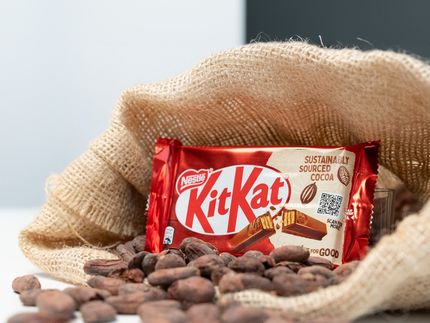How the mold influences a chocolate bar's crystalline structure
Advertisement
When enjoying a chocolate bar, most people don't think about how the molecules within it are organized. But different arrangements of the fats in chocolate can influence its taste and texture. Now, researchers reporting in ACS' Crystal Growth & Design have found that the side of a chocolate bar facing the mold has a more orderly crystalline structure than the side facing air, knowledge that might help chocolatiers produce tastier confections, the researchers say.

webandi / Pixabay
Chocolate is a mixture of cocoa solids, cocoa butter, sugar and other ingredients that interact with each other in complex ways. In particular, the fat molecules, or triacylglycerols, can remain liquid or crystallize into several phases with different melting points. The temperature at which a particular chocolate melts affects its taste and texture, with a melting point near body temperature being ideal. When chocolatiers make bars, they pour tempered chocolate into a mold and let it cool at temperatures that favor the most desirable crystal form. Fumitoshi Kaneko and colleagues wondered how the mold, which conveys heat more efficiently than air and also provides a physical barrier, affects fat crystallization.
To find out, the researchers analyzed the structure of fat components at three different positions in a chocolate bar using polarized Fourier transform infrared spectroscopy and attenuated total reflection sampling. They found that the mold-side face of the bar contained highly ordered, regularly packed fatty acid chains, whereas the air-side face had disordered, irregularly packed chains, and the midpoint showed intermediate characteristics. The mold side also contained more of the most desirable fat crystal form than the other locations. These results could be explained by the large difference in thermal conductivity between the mold's material and air, which causes the chocolate to preferentially cool and crystallize on the mold-side face. The mold also provides a barrier that controls the direction of crystallization, yielding a more orderly arrangement. These results suggest that a chocolate bar's structure is much less uniform than previously thought, and that improving the crystallization process might lead to better-tasting, melt-in-your-mouth and better-looking chocolate bars, the researchers say.



























































